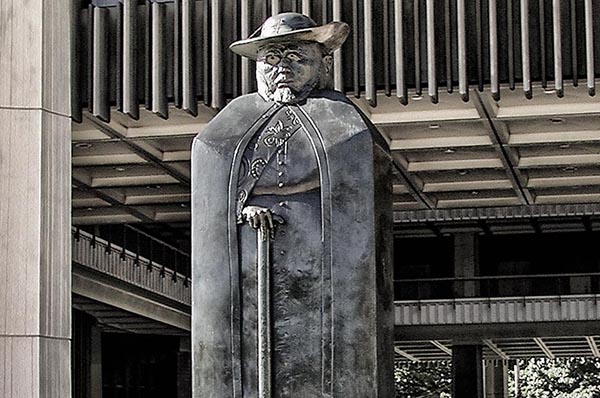For over one hundred years, the medical condition known leprosy has been quarantined and treated within leper colonies in Hawaii.
With beautiful beaches, lush islands, and a vibrant history, Hawaii is the ideal vacation spot for millions of people per year. Hawaii is known for many things, such as Pearl Harbor, hula dancers, and surfing to name just a few. What many people don’t know about the tropical paradise, is its connection to the feared medical condition known as leprosy or Hansen’s Disease. The exact time and date of the disease is unknown on the island, but cases of it were seen as early as the sixteenth century from shipwrecked sailors or lost ships, according to the oral histories of indigenous Hawaiians.
Leprosy in Paradise
The first recorded suspected leprosy case was documented in 1786. How the disease began on the islands is widely speculated from the Chinese, to Europeans, and even to the American colonists. For hundreds of years, thousands of people from all races, occupations, countries, and walks of life landed on the shores of the Hawaiian Islands. Those sailing to and from Hawaii were not all uncontaminated, and documentation concerning many diseases such as tuberculosis, typhoid, many venereal diseases, and leprosy were all dealt with as the epidemics arose.
Leprosy was seen as a social and economic destroyer, the more people with the disease on the island, the less likely foreigners would want to invest into the economy. A small portion of the Queen’s Hospital on the island of Honolulu was therefore designated as the leprosy hospital . The leprosy hospital was not created to cure the disease, but to label each patient as a leper, suspect of leprosy, or not a leper. For many decades, starting in the late eighteenth century to the middle of the nineteenth century, people with leprosy were kept in a barricaded area behind the hospital. But many infected indigenous Hawaiians ran from the barricade and would live with their uninfected families, therefore spreading the disease. It was the latter part of this reason that the government decided on a separate colony for only those inflicted with leprosy.
The Island of Molokai
Leprosy is not a fatal disease, but for many Hawaiians during the beginning of the quarantining, the condition was considered a crime. The time of official banishment began with the passage of the Segregation Law of 1865. This kept leprosy inflicted people separate from the rest of the population: foreigners, who were the economic contributors to Hawaii, and the indigenous Hawaiians, who thought the laws were in place to destroy families and kill their culture. It wasn’t until 1870 that the law was strictly enforced. The punishment, if anyone would be caught with the disease, would be forced internment in the Honolulu leprosy hospital for testing, then retesting in the Kalihi Hospital, and then banishment to the colony found on Molokai island. Any connection to the outside world would be terminated, and the person would be officially decreed as dead.
The island of Molokai was chosen as the official spot of the leprosy colony, due to its topography. This area was chosen by the Board of Health due to its numerous valleys and the hard to reach Kalawao and Kalaupapa Peninsulas. The colonies became torturous places, where stealing, destroying the land, alcoholism, and killing weaker people became the norm.
Father Damien then arrived to the peninsulas, begging to be the Catholic missionary to the diseased colonists. His arrival helped turn the colony around from a dangerous place, to a place filled with sadness and death, but with industrious people. He helped build better houses, create better water conditions, begged for medicines, arranged better burial practices, and reestablished the importance of farming. He lived among the people for fifteen years until he too contracted leprosy and died in Kalaupapa Peninsula.
The beginning years of the colonies on Kalawao and Kalaupapa Peninsulas were full of uncertainties. The uncertainty of living long, adequate housing, having something to eat, getting medicines, as well as being treated by medical personal was a constant struggle. Even with the internment laws, families continued to hide their ailing members, hoping not to be detected. For over one-hundred years, the leprosy prison remained, and some people still continue to live in the colonies in present day, sharing in the history of the most severe medical isolation in the history of America.
Sources:
- Gould, Tony. (2005). A Disease Apart: Leprosy in the Modern World. New York, New York; St. Martin’s Press.
- Storrs Lee, W., editor. (1967). Hawaii: A Literary Chronicle. New York, New York; Funk & Wagnalls.
- Tayman, John. (2006). The Colony: The Harrowing True Story of the Exiles of Molokai. New York, New York: A Lisa Drew Book/Scribner.








